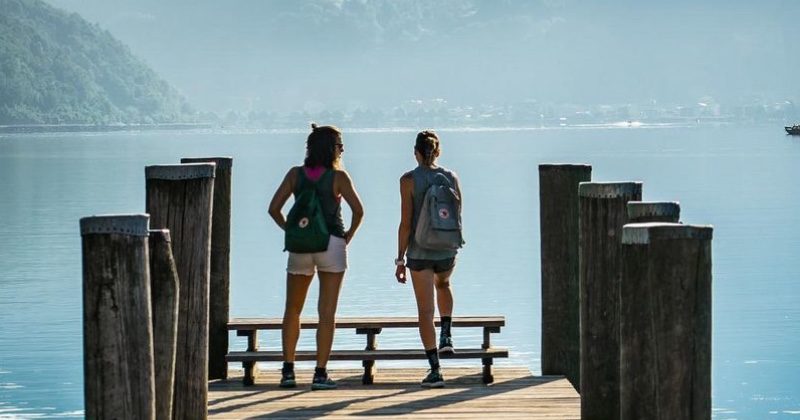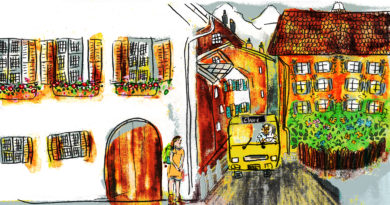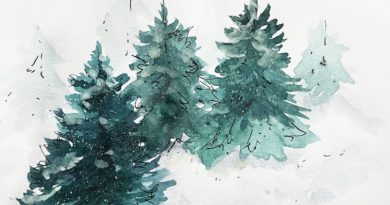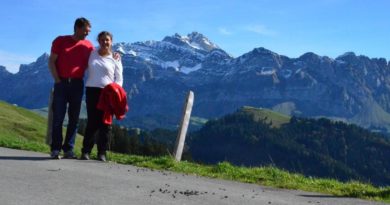Hiking in Changeable Weather: What to Do?
One of our challenges in spring and early summer is planning outdoor activities. What to do! Will it rain or will it snow? Will it be warm or will it be cold? Where do we go – to the lakes or to the Alps? And what if “April April, der macht was er will?” (April, April, it does whatever it likes) comes to pass? Can we divert to an interesting indoor activity appropriate for children, teens and adults?
Head to Lucerne, where you have everything available in close proximity – be spontaneous. If the weather turns out to be less than inviting, grab your kids, of all ages, and visit the Swiss Transport Museum (Verkehrshaus). If, however, spring weather feels more like early summer to you, then explore the RIgi Kulm area. You could enjoy a boat trip on Lake Lucerne (Vierwaldstättersee) and take the Vitznau Rigi cogwheel train, Europe’s oldest mountain train, up to Rigi Kulm, where you can enjoy a picnic and the majestic views. There are restaurants as well and the usual tourist kiosks and activities.
Tourist areas are all well and good, of course, but we prefer nature, so we walk! I always pack water and food and of course an emergency kit, put on sturdy walking shoes, or better yet, hiking boots, and I’m prepared for any weather.
In the area of Lucerne the Rigi Kulm offers almost limitless walking possibilitiesaccording to your interests and ability, ranging from easy and accessible for strollers to difficult and steep, with a guide required.
The Rigi Floral trail can be navigated with a stroller. It is an easy, 7-km hike (about two hours) with only a 300 m ascent. The path is paved and therefore suitable for both wheelchairs and strollers. You’ll have gorgeous views and encounter native flowers along the way, more than 200 species. Fortunately, there are signposts along the trail identifying the flowers (in German). My husband and I especially like this hike, because you have a chance to see classic Nagelflüh,a conglomerate rock that was deposited in shallow waters in front of the rising mountains during the Miocene Epoch, millions of years ago. There is also a post that explains this in lay terms.
When you are ready to leave, you can catch a train down to the valley from three locations: Rigi Wölfertschen-First, Rigi Klösterli or Rigi Kaltbad.
If, however, you think this might be either too difficult or too easy, there are myriad other trails you can take.
The Classic Rigi Vitznau trail (Rigi Kulm – Staffel – Staffelhöhe – Känzeli – Rigi Kaltbad) is all downhill, takes about an hour and requires little effort. You will see the Black Forest, The Vosgnes Mountains, Swiss Alps, of course, as well as Lake Lucerne. For those who enjoy watching “The Crown” or are otherwise fans of England’s royal family, Queen Victoria visitedthis area on horseback in 1871. This year we plan to take the Mark Twain Trail, named after one of its earliest visitors. Twain took three days to ascend the mountain. Nowadays, it takes about five hours and is considered difficult, with an ascent, at times steep, of 1358 m. From what we have heard, though, it is well worth it!
Safety Tips: Whenever you venture into the mountains, do consider safety. The regular, easy trails are indicated by yellow signposts. White-red marks on the yellow signposts indicate mountain trails that are steeper and rocky. In any case, remain on the trails. Also, be prepared for inclement weather even if it is lovely, because weather can change abruptly in the mountains. DO make sure you have a timetable for your public transportation of choice. In Switzerland, we are spoiled with the ability to travel everywhere, but there are times when trains might be closed due to repairs or stop running earlier than you expect. Bring trail maps, as you may not have access to a mobile network. We download the maps before the hike. The Rigi train station has information and maps for the different trails so you can pick up one there. In addition to sturdy shoes, wear your clothing in layers – the temperature can drop quickly.
By Dr Teresa Bingham-Müller
Teresa is a geologist and educator who currently works as an instructor and science editor. She has three sons ages 18, 21, and 34, and two grandchildren.
Photo credit: www.luzern.com




